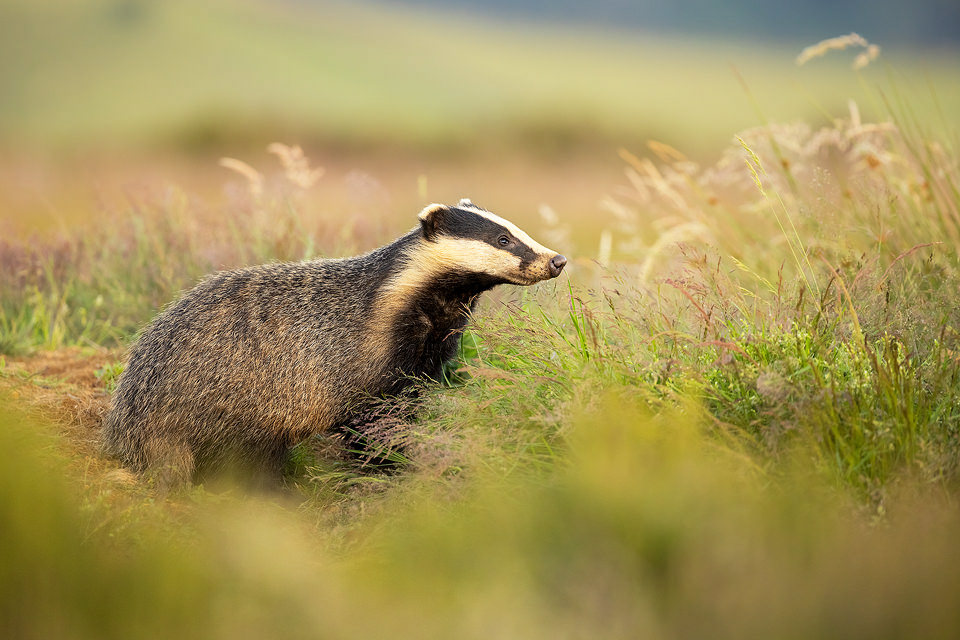late summer badger cub
late summer badger cub. A badger cub sniffing air outside the main sett entrance in warm late evening late. On this season the grasses surrounding the sett were the tallest I’ve ever seen, often making it tricky to get a clear view. However when the badgers raised their heads high enough, the seed heads caught the light beautifully, adding additional texture and colour. Peak District National Park.
Badgers are largely nocturnal and extremely shy but remain one of the UK’s favourite mammals. Most people have never seen a live badger, let alone photographed one in daylight. If you would prefer to save yourself all the time and hard work looking for badgers yourself, why not book one of my very popular Badger Photography Workshops? Over the years I have located hundreds of active setts. These have been carefully monitored for cubs, daylight activity, an open setting and the best light, with workshops run at the best of the best.
Visit my extensive gallery of badger images.
Badgers face severe persecution due to their alleged link with btB, read more about it here: https://www.francisjtaylor.co.uk/blog/badgers-and-btb/
late summer badger cub- More About Badgers:
European badgers (Meles meles) are short-legged powerfully built omnivores in the family Mustelidae, which also includes the otters, wolverines, martens, minks, polecats, weasels, and ferrets. European badgers are native to almost all of Europe and some parts of the Middle East. A male badger is called a boar, a female is a sow and the young are called cubs. The word badger is said to derive from the French word ‘bêcheur’ meaning ‘digger’.
Badgers are one of Britain’s most evocative and easily recognisable mammals. These gentle woodland creatures have faced severe persecution over the years, so they have developed a strong fear of humans. This elusive personality, combined with their photogenic nature puts them pretty high up on any wildlife photographers list.
Badgers live in complex underground burrow systems called ‘setts’. Highly sociable creatures, family groups or ‘clans’ typically number around six or seven badgers, including a dominant female badger or ‘sow’ who is the only badger allowed to have cubs. Setts have a number of interconnected rooms or ‘chambers’ and entrances that lead outside. Some setts can be centuries old, and span over huge areas with many entrances.
Many believe the best way to identify an active sett is by the entrance holes. Badgers typically favour a characteristic sideways ‘D’ shape entrance. However the entrance shape can be misleading as many animals can occupy old setts. Badgers, foxes, rabbits and even otters have all been known to take over each others old burrows. Actually one of the best ways to tell is by fresh piles of dirt outside, Badgers are voracious diggers and are constantly expanding their setts.
Despite their media reputation, badgers are meticulously clean creatures. They do eat or defecate inside the sett keep their living quarters clean and will and drag old bedding outside to air it out outside to prevent a build up of fleas and lice. They are also one of the few mammals that use special latrines (communal toilets). Badger families typically have several latrines that are located on regular foraging routes and on territorial borders with other badger clans.
You can find more about the badger here.
